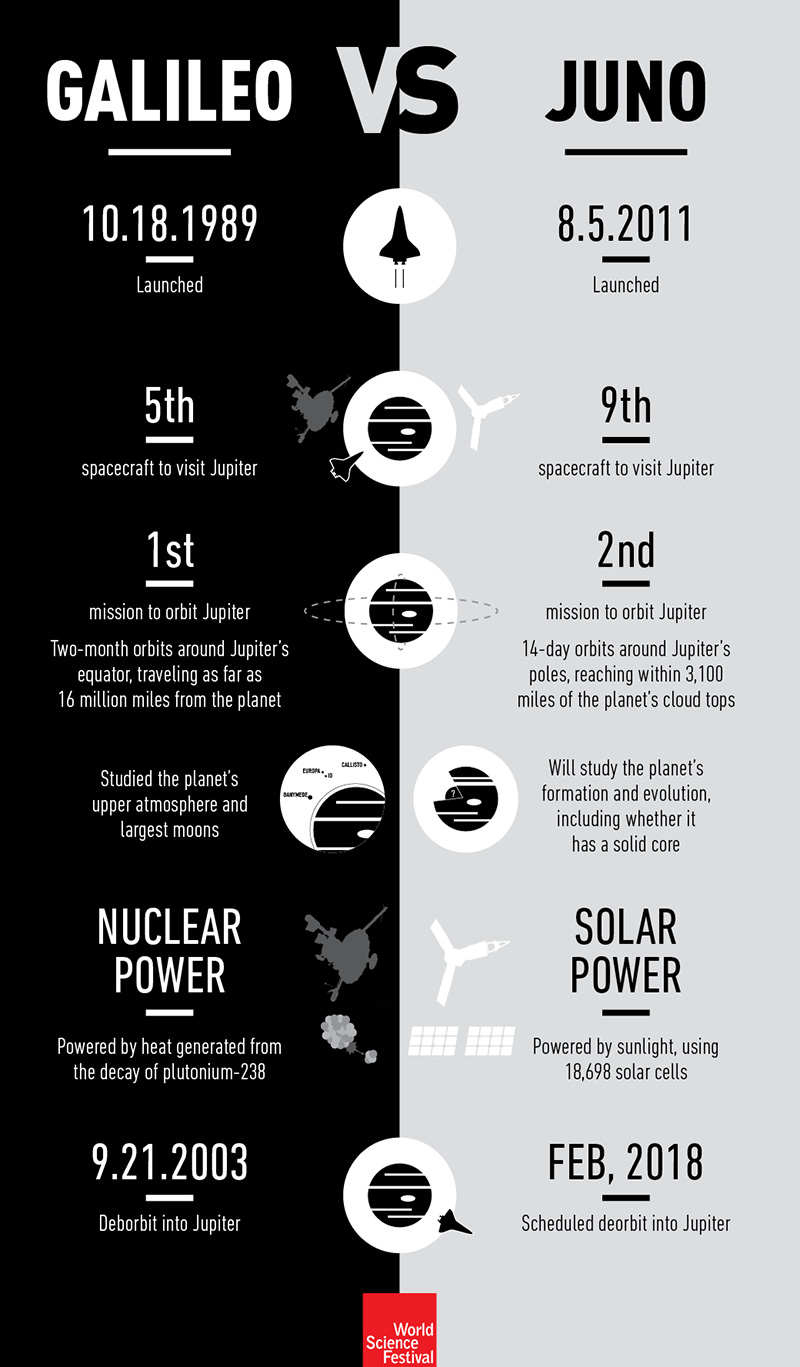 On July 5, NASA’s Juno spacecraft slid into orbit around the gas giant Jupiter, our solar system’s largest planet. It’s the latest in a 30-year history of robots visiting the planet, which still holds mysteries after decades of study.
On July 5, NASA’s Juno spacecraft slid into orbit around the gas giant Jupiter, our solar system’s largest planet. It’s the latest in a 30-year history of robots visiting the planet, which still holds mysteries after decades of study.
Jupiter is a behemoth: It’s 318 times bigger than Earth, and two-and-a-half times more massive than all of the other planets in our solar system combined. Because it’s so huge, the pull of its gravity has kept its original atmospheric composition in tact (not the case for tiny Earth, where lighter gases like helium largely escaped early in the planet’s history). By studying it, then, scientists can get clues to the early solar system’s composition, plotting out the origins and formation of not just Jupiter, but our entire little corner of the universe.
As groundbreaking as its mission will be, Juno owes its promise to the spacecrafts that came before it, particularly Galileo, a combination orbiter and probe that launched from Earth before the average person owned a computer. Galileo is the only other spacecraft to orbit Jupiter—the rest simply stopped by the planet en route to other destinations—putting Galileo and Juno in a class all their own.
Comments